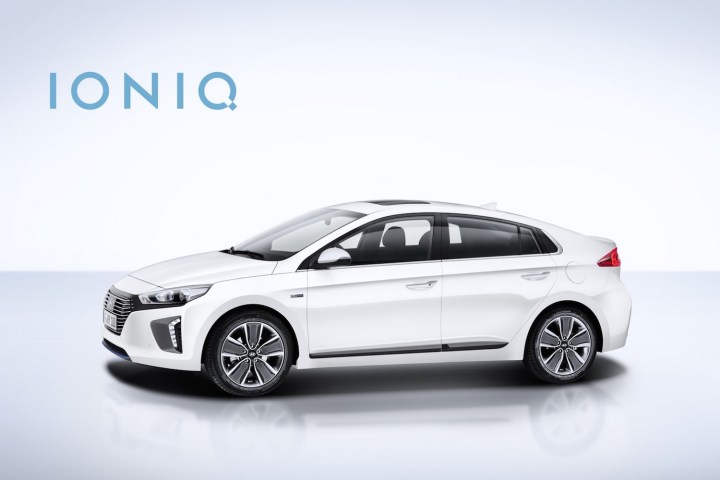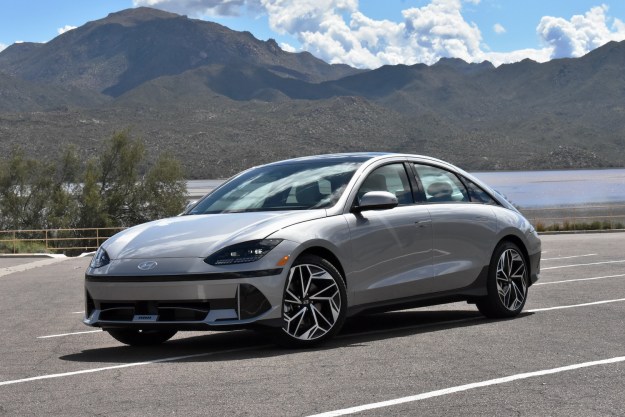
The entry-level Ioniq Blue starts at just $23,035 and promises a best-in-class (yes, even better than the Toyota Prius) mpg rating of 58 combined. From there, the SEL asks $24,785 and the Ioniq Limited retails for $28,335. At just about $5,000 more for the fully loaded hybrid, features like leather, HID headlights, a sunroof, premium audio, and safety technologies seem like a bargain. Most importantly, the cheapest Ioniq hybrid is $2,500 less expensive than the entry-spec Prius Two, which checks in at $25,575.
Regardless of trim, the Ioniq hybrid is powered by a 1.6-liter, four-cylinder engine paired with an electric motor for a combined 139 horsepower (again besting the Prius and its 121 hp combo). The Ioniq’s powertrain is mated to a six-speed, dual-clutch automatic transmission.
Next up is the Ioniq Electric. Like the hybrid, the pure EV is mighty attractive given the competitive set. Priced at $30,335 for the base trim, the Ioniq Electric’s 124-mile range is better than the Nissan Leaf’s 107-mile rating and the BMW i3’s 114-mile rating. The Ioniq EV is matched by Volkwagen’s latest e-Golf (124 miles) and seriously outclassed by the Chevrolet Bolt EV (238 miles), but the Ioniq is priced below every one of its direct competitors. For more convenience features, the Ioniq Limited is available at $33,335.
Don’t forget to subtract the $7,500 federal tax credit and any state incentives from these figures.
Hyundai will also introduce a plug-in hybrid version of the Ioniq this Fall to rival Toyota’s Prius Prime. There’s a good chance that model will be as aggressively priced and high-performing as the hybrid and pure EV versions.
Editors' Recommendations
- The Tesla Model Y is at its lowest price yet — but should you buy one?
- Hyundai Ioniq 9: price, release date, range, and more
- I love my Ioniq, but I would never buy another Hyundai
- Tesla Model 3 vs. Hyundai Ioniq 6: Which electric sedan is best?
- Move aside, Tesla. The Hyundai Ioniq 6 is the best electric sedan for the masses


